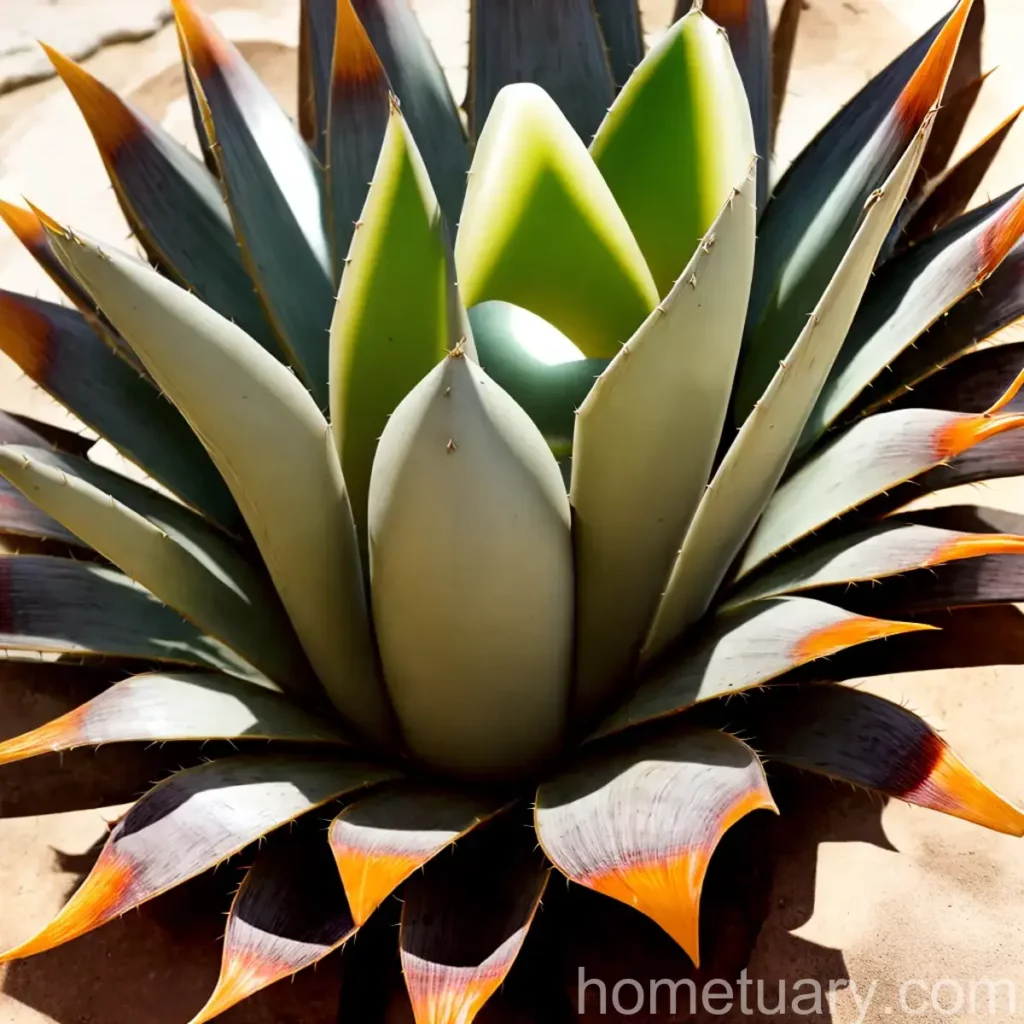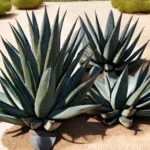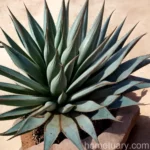All About Agave (Agave geminiflora RASTA MAN)
Agave geminiflora, also known as RASTA MAN Agave, is a striking succulent plant with unique characteristics and versatile uses. This distinctive plant has garnered attention from botanists, horticulturists, and gardening enthusiasts for its resilience, low maintenance, and ornamental appeal. In this comprehensive guide, we will delve into the culture, uses, care tips, and other essential aspects of Agave geminiflora. Whether you are a seasoned gardener or just beginning your foray into the world of plants, this guide will equip you with valuable insights into the fascinating world of Agave geminiflora.
What is Agave (Agave geminiflora RASTA MAN)?
Agave geminiflora, commonly referred to as RASTA MAN Agave, is a species of agave renowned for its striking appearance and adaptability. Belonging to the Asparagaceae family, this succulent plant is native to Mexico, where it thrives in arid and semi-arid regions. The characteristic features of Agave geminiflora include slender, elongated leaves arranged in a rosette pattern, giving the plant a symmetrical and visually appealing structure. The leaves are often adorned with intricate filaments, adding to the ornamental value of this species.
Agave geminiflora is known for its hardiness, drought tolerance, and suitability for a wide range of growing conditions. These attributes make it a popular choice for xeriscaping, landscape design, and container gardening. The plant’s distinctive appearance and low maintenance requirements have also contributed to its growing popularity among horticultural enthusiasts and homeowners seeking to enhance their outdoor spaces with unique and resilient plant species.
Key Takeaways – Agave (Agave geminiflora RASTA MAN)
Before delving into the specifics of Agave geminiflora’s culture, uses, care requirements, and other essential aspects, let’s highlight the key takeaways that encapsulate the essence of this remarkable plant:
- Agave geminiflora is a striking succulent known for its symmetrical rosette of slender, elongated leaves adorned with intricate filaments.
- This plant is recognized for its resilience, drought tolerance, and adaptability to various growing conditions, making it an excellent choice for xeriscaping and landscape design.
- Agave geminiflora is prized for its ornamental appeal and low maintenance requirements, appealing to both experienced gardeners and beginners.
- The plant’s versatility extends to its cultural significance, uses in traditional practices, and potential for culinary and medicinal applications, adding to its value beyond its aesthetic attributes.
With these key takeaways in mind, let’s explore the various aspects of Agave geminiflora in greater detail, encompassing its culture, uses, care tips, and more.
Culture
Understanding the cultural requirements of Agave geminiflora is essential for successfully cultivating and caring for this distinctive succulent. From its preferred growing conditions to its historical and cultural significance, the following insights shed light on the cultural dimension of this captivating plant.
Origin and Native Habitat
Agave geminiflora is indigenous to Mexico, where it thrives in arid and semi-arid regions characterized by well-drained, sandy soils and ample sunlight. The plant’s natural habitat includes areas with sparse vegetation and limited water availability, highlighting its remarkable adaptability to drought and harsh environmental conditions. Through its evolution, Agave geminiflora has developed mechanisms to conserve water and withstand periods of prolonged dryness, making it well-suited for regions with minimal rainfall and arid climates.
The plant’s native habitat also reflects its historical significance in Mexican culture, where various species of agave hold deep-rooted importance in traditional practices, culinary traditions, artisanal crafts, and symbolic representations. Agave plants, including Agave geminiflora, have been intertwined with the cultural tapestry of Mexico for centuries, playing a pivotal role in the lives of indigenous communities and contributing to the country’s rich botanical heritage.
Symbolism and Cultural Significance
In Mexican folklore and indigenous traditions, agave plants carry symbolic and cultural significance, often representing resilience, endurance, and the ability to thrive in challenging conditions. Agave geminiflora, with its unique characteristics and adaptability, exemplifies these enduring qualities, making it a symbol of strength and tenacity within the cultural context of its native homeland.
The plant’s symbolic resonance extends to its associations with traditional rituals, ceremonies, and artisanal practices. Agave plants, including Agave geminiflora, have been utilized in the production of various products, such as textiles, beverages, and medicinal remedies, further emphasizing their integral role in Mexican cultural practices and craftsmanship.
Landscape Design and Ornamental Uses
Beyond its cultural and historical significance, Agave geminiflora has gained prominence as an ornamental plant prized for its aesthetic appeal and architectural form. In landscape design, this succulent species is valued for its ability to create visually striking focal points, accentuate arid garden landscapes, and complement modern or minimalist design aesthetics. The plant’s symmetrical rosette of slender leaves and the intricate filaments adorning its foliage contribute to its visual allure, making it a versatile choice for enhancing outdoor spaces with a touch of elegance and natural beauty.
The ornamental uses of Agave geminiflora extend to its suitability for xeriscaping, a landscaping approach that emphasizes water conservation and sustainable practices. By incorporating Agave geminiflora into xeriscape designs, gardeners and landscape architects can achieve both aesthetic appeal and environmental conscientiousness, showcasing the plant’s dual significance in sustainable landscape design and ornamental horticulture.
Uses
Agave geminiflora exhibits a diverse range of uses, encompassing both practical applications and cultural significance. From its traditional uses in artisanal crafts to its potential for culinary and medicinal purposes, the following insights shed light on the multi-faceted uses of this remarkable succulent plant.
Traditional Artisanal Crafts
In Mexican culture, agave plants have been integral to the creation of artisanal crafts, with each species offering distinct fibers, materials, or resources for traditional handicrafts. Agave geminiflora, with its slender leaves and intricate filaments, provides raw materials that can be utilized in the production of textiles, baskets, mats, and other woven products. The fibers derived from Agave geminiflora’s leaves possess strength and flexibility, making them well-suited for weaving and crafting durable, functional items that reflect the plant’s cultural significance within the realm of traditional artisanal crafts.
Culinary Applications
The culinary potential of agave plants, including Agave geminiflora, extends to their role in the production of traditional beverages and sweeteners. One of the most renowned products derived from agave plants is agave nectar, a natural sweetener prized for its distinct flavor and versatility in culinary applications. Agave nectar, sourced from the sap of agave plants, serves as an alternative to processed sugars, offering a sweetening agent with unique taste profiles and potential health benefits.
In addition to agave nectar, certain species of agave, such as Agave tequilana, are utilized in the production of distilled spirits, including the renowned Mexican liquor, tequila. While Agave geminiflora may not be as widely associated with alcoholic beverage production as other agave species, its overarching culinary relevance within the agave genus underscores the diverse applications and cultural significance of agave plants in traditional cuisine and beverage crafting.
Medicinal and Nutritional Properties
Agave plants have been historically valued for their potential medicinal properties, with traditional herbal remedies harnessing the therapeutic attributes of various agave species. While specific information regarding the medicinal uses of Agave geminiflora may vary, agave plants in general have been associated with medicinal applications ranging from wound healing and anti-inflammatory effects to digestive health and immune system support. The sap, leaves, and other constituents of agave plants contain bioactive compounds that have piqued the interest of researchers and herbal practitioners, hinting at the plants’ potential contributions to traditional and contemporary medicine.
From a nutritional standpoint, agave plants offer certain dietary benefits, particularly in the form of agave nectar. As a natural sweetener, agave nectar presents a lower glycemic index compared to conventional sugars, making it a favored choice for individuals seeking alternatives that mitigate blood sugar spikes. The distinct flavor profile of agave nectar, derived from the natural sugars present in agave sap, adds a unique dimension to culinary preparations and dietary preferences, underscoring the plant’s role as a source of natural sweetness with potential health-conscious implications.
Water
The water requirements of Agave geminiflora are integral to its successful cultivation and long-term health. Understanding the plant’s preferences for water, as well as its adaptive mechanisms for water conservation, is essential for providing optimal growing conditions and preventing potential issues related to overwatering or water stress. The following insights delve into Agave geminiflora’s watering needs and the best practices for managing its water requirements.
Watering Needs
Agave geminiflora, like many succulent species, exhibits a preference for infrequent, deep waterings that simulate the natural precipitation patterns of arid and semi-arid environments. The plant’s native habitat, characterized by limited rainfall and well-drained soils, has shaped its adaptation to thrive with minimal water input while effectively storing moisture for sustained periods. When cultivating Agave geminiflora, it is crucial to replicate these arid-adapted watering practices, which involve allowing the soil to dry out between watering sessions to prevent waterlogged conditions that can compromise the plant’s root health and overall vitality.
The frequency of watering Agave geminiflora is contingent upon environmental factors such as temperature, humidity levels, and seasonal variations. During the active growing season, typically spring and summer, the plant may require more frequent watering to support its growth and metabolic processes. As temperatures rise and the soil dries out, it is advisable to monitor the moisture levels around the plant and administer water when the top few inches of soil are dry to the touch. Conversely, in the dormant or resting phase during fall and winter, Agave geminiflora necessitates reduced water input, mirroring the conditions of decreased rainfall and lower metabolic activity experienced in its native habitat.
Watering Techniques
When watering Agave geminiflora, it is essential to employ techniques that facilitate deep, thorough moisture penetration while avoiding water accumulation around the plant’s base. Directing water towards the root zone and allowing it to permeate the soil deeply encourages the development of a strong and robust root system, enhancing the plant’s ability to access water stores during dry periods. For container-grown Agave geminiflora, ensuring proper drainage is imperative to prevent waterlogging, which can lead to root rot and other moisture-related issues. Selecting well-draining potting mixes and incorporating materials such as perlite or coarse sand can improve the drainage capacity of the growing medium, promoting healthy root respiration and moisture regulation.
In addition to traditional watering methods, such as using a watering can or hose, gardeners can consider rainwater harvesting as a sustainable water source for Agave geminiflora and other garden plants. Collecting and utilizing rainwater from rooftops or designated catchment areas not only reduces reliance on municipal water supplies but also provides a natural and mineral-rich water source that can benefit the overall health and vitality of succulent plants, including Agave geminiflora.
Sunlight
Sunlight plays a pivotal role in the growth, development, and overall well-being of Agave geminiflora, shaping its distinctive ornamental traits and physiological adaptations. Understanding the plant’s sunlight preferences, photochemical requirements, and best practices for sun exposure enables gardeners to create optimal growing environments that promote the plant’s vigor, resilience, and visual appeal. The following insights delve into Agave geminiflora’s sunlight needs and the factors to consider when providing adequate light for this striking succulent.
Sunlight Preferences
Agave geminiflora thrives in bright, full sunlight conditions characterized by direct exposure to the sun’s rays for a significant portion of the day. The plant’s natural habitat in arid regions exemplifies its affinity for intense sunlight, which contributes to photosynthetic activity, leaf pigmentation, and the synthesis of energy reserves essential for its survival in low-water environments. When cultivated in outdoor settings, such as gardens, landscapes, or xeriscape installations, Agave geminiflora flourishes in locations that receive ample sunlight, typically a minimum of six to eight hours of direct sun exposure daily.
While the plant’s preference for sunlight is pronounced, it also showcases adaptability to partial shade conditions, particularly in regions with intense midday or afternoon sun. Providing some respite from intense sunlight during the hottest hours of the day can benefit Agave geminiflora, mitigating the risk of sunburn, excessive transpiration, and heat stress. Partial shade settings, characterized by dappled sunlight or filtered light, can offer a balance between sun exposure and moderate protection, ensuring the plant’s physiological processes operate optimally without undue strain from extreme sunlight exposure.
Light Requirements for Indoor Cultivation
For individuals seeking to grow Agave geminiflora indoors, understanding the plant’s light requirements and selecting appropriate growing locations are paramount to its success as a container specimen or ornamental houseplant. When growing Agave geminiflora indoors, placement near south- or west-facing windows that receive ample sunlight is ideal, as these orientations maximize the plant’s access to natural light sources crucial for its growth and vitality. Care should be taken to avoid exposing Agave geminiflora to drafts, abrupt temperature fluctuations, or excessively dry indoor environments, as these factors can compromise the plant’s overall health and lead to stress-related issues.
In situations where natural light may be limited within indoor spaces, supplemental lighting in the form of grow lights or horticultural lamps can provide the requisite spectrum and intensity of light necessary for Agave geminiflora’s photosynthetic processes. Selecting full-spectrum LED or fluorescent grow lights that emit wavelengths conducive to plant growth and development can augment natural light availability, effectively supporting the plant’s light requirements and compensating for suboptimal lighting conditions indoors.
Fertilizer
Fertilization is an essential aspect of nurturing Agave geminiflora and promoting its growth, resilience, and ornamental qualities. While agave plants, including Agave geminiflora, are renowned for their low maintenance and reduced fertilizer needs compared to other ornamental species, providing appropriate nutrients at strategic intervals can bolster the plant’s vitality and visual appeal. The following insights provide guidance on the best practices for fertilizing Agave geminiflora, including suitable fertilizer types, application techniques, and timing considerations.
Fertilizer Types and Composition
When selecting fertilizers for Agave geminiflora, it is essential to prioritize formulations that align with the plant’s preferences for arid and nutrient-poor soils, mirroring its native growing conditions. Incorporating low-nitrogen, slow-release fertilizers with a balanced nutrient profile can support the plant’s growth without inducing excessive vegetative vigor or succulent tissue elongation. Opting for specialized succulent or cacti fertilizers, which are formulated to meet the nutritional demands of drought-adapted plants, ensures that Agave geminiflora receives essential macro and micronutrients tailored to its physiological requirements.
The nutrient composition of the selected fertilizer should emphasize phosphorus and potassium, the primary elements that promote root development, flowering, and stress resistance in succulent plants. Phosphorus supports the establishment of robust root systems and enhances flowering capacity, while potassium contributes to overall plant resilience, water regulation, and tolerance to environmental stressors. By prioritizing these essential nutrients within the fertilizer formulation, gardeners can provide Agave geminiflora with the foundational elements it requires for sustained vigor and ornamental display.
Fertilizer Application and Timing
Incorporating fertilization into the care regimen of Agave geminiflora necessitates prudent application practices that align with the plant’s growth cycles and seasonal requirements. During the active growing season, typically spring and summer, the plant benefits from supplemental fertilization to support its metabolic processes, foliar development, and potential flowering stages. Applying a balanced succulent fertilizer or a dilute solution of a specialized fertilizer every four to six weeks can supply Agave geminiflora with the necessary nutrients for sustained growth and vitality, particularly when combined with appropriate watering and light conditions.
As the plant transitions into its dormant or rest phase during fall and winter, fertilization should be minimized or discontinued to reflect reduced growth and metabolic activity. The plant’s physiological priorities during this period shift towards conserving energy, regulating water uptake, and preparing for potential environmental stressors, necessitating a conservative approach to nutrient supplementation. By adjusting the fertilization frequency and potency to correspond with Agave geminiflora’s seasonal rhythms, gardeners can optimize the plant’s response to nutrient input and minimize the risk of fertilizer-related issues, such as salt accumulation in the soil or excessive nutrient availability.
Soil
The selection of suitable soil for Agave geminiflora is paramount to its overall health, drainage requirements, and root development. Given the plant’s adaptation to arid and well-drained environments, providing a well-suited growing medium that mimics its native habitat is essential for promoting robust growth and resilience. The following insights delve into the optimal soil characteristics for cultivating Agave geminiflora, along with considerations for soil composition, structure, and management.
Soil Characteristics
Agave geminiflora thrives in well-drained, sandy, or sandy-loam soils that facilitate rapid moisture percolation and aeration of the root zone. These soil types, exemplifying traits of arid and semi-arid environments, align with the plant’s natural adaptation to limited water availability and the need to prevent waterlogged conditions that can compromise root health. When selecting or preparing soil for Agave geminiflora, it is critical to prioritize porosity, permeability, and structural stability, ensuring that the growing medium fosters beneficial root respiration, moisture regulation, and nutrient accessibility.
Incorporating organic amendments, such as coarse sand, perlite, or pumice, into the soil mix can enhance its drainage capacity and mitigate the risk of water accumulation around the plant’s roots. These materials contribute to soil aeration, prevent compaction, and facilitate the movement of water through the root zone, creating an environment conducive to the establishment and sustenance of healthy root systems. By optimizing the soil characteristics to align with Agave geminiflora’s preferences, gardeners can create growing conditions that support the plant’s resilience and ornamental appeal.
Container and Potting Mix Considerations
For container-grown Agave geminiflora, selecting appropriate pots and potting mixes is essential for promoting successful growth, root development, and overall container plant health. Choosing containers with adequate drainage holes that allow excess water to escape freely prevents waterlogging, which can compromise the plant’s root system and lead to moisture-related issues. Non-porous materials, such as terracotta or ceramic pots, encourage airflow to the roots and facilitate moisture evaporation, contributing to a balanced and well-regulated soil environment within the container.
The composition of the potting mix used for Agave geminiflora should reflect the plant’s soil preferences, emphasizing well-draining, fast-draining, and nutrient-balanced substrates that promote optimal root growth and sustained moisture regulation. Preparing a mix consisting















